Square Garden Bed Ideas: Transform Your Yard with Creative Designs
If you’re looking to add a touch of organization and style to your garden, square garden beds might be just what you need. These beds not only look neat but are also easy to manage and maintain. Square garden beds offer a versatile solution for growing a variety of plants, from flowers to vegetables.
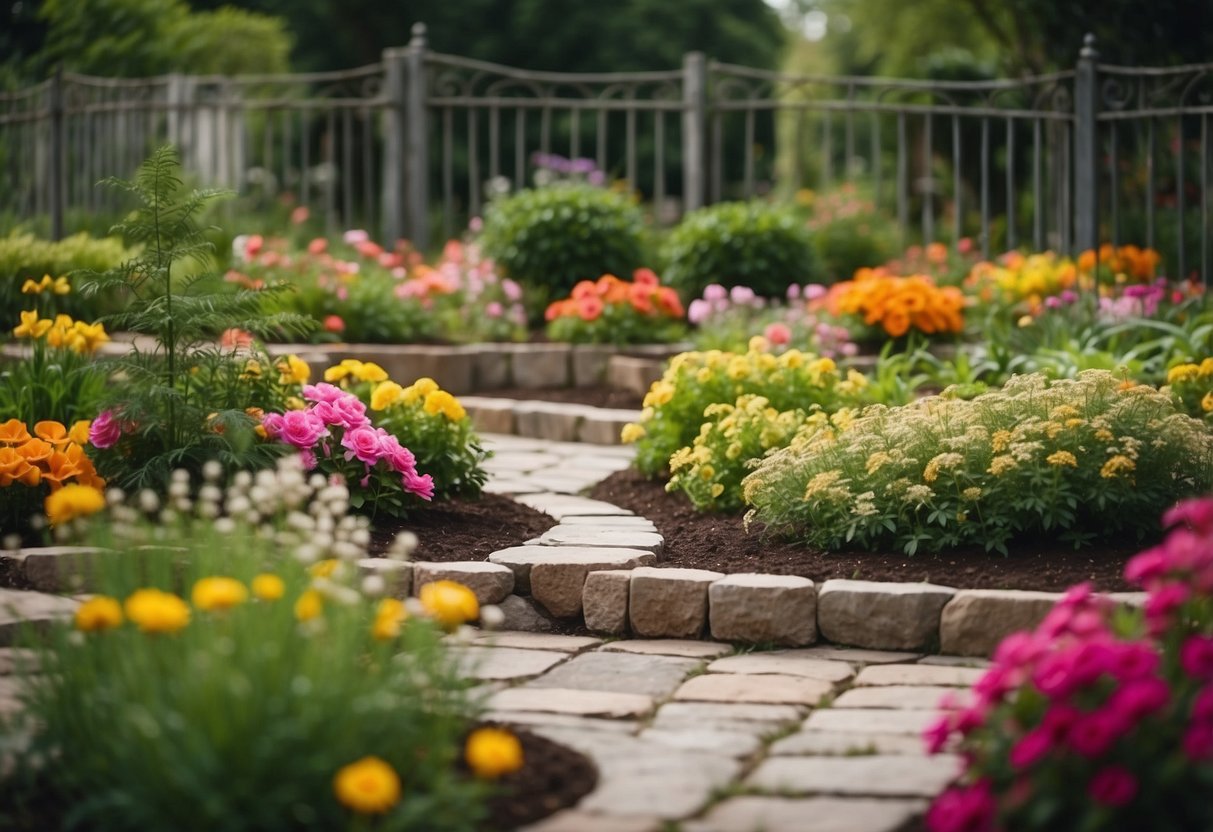
With a square layout, you can maximize your space and create a visually appealing garden area. Whether you have a small backyard or a large plot of land, there’s a square garden bed design that will fit your needs perfectly. Get ready to explore different ideas to transform your garden into a beautiful and functional space.
1) Raised Cedar Bed

A raised cedar bed is a great idea for your square garden. Cedar is naturally resistant to rot and insects, which means your garden bed will last for years.
You can build a simple cedar bed with just a few basic tools. Measure and cut your cedar boards, then assemble them using screws or nails.
For added stability, consider adding corner braces. This will help keep your garden bed sturdy, even when filled with soil and plants. Check out these raised garden bed plans for more ideas!
2) Tiered Wooden Planter
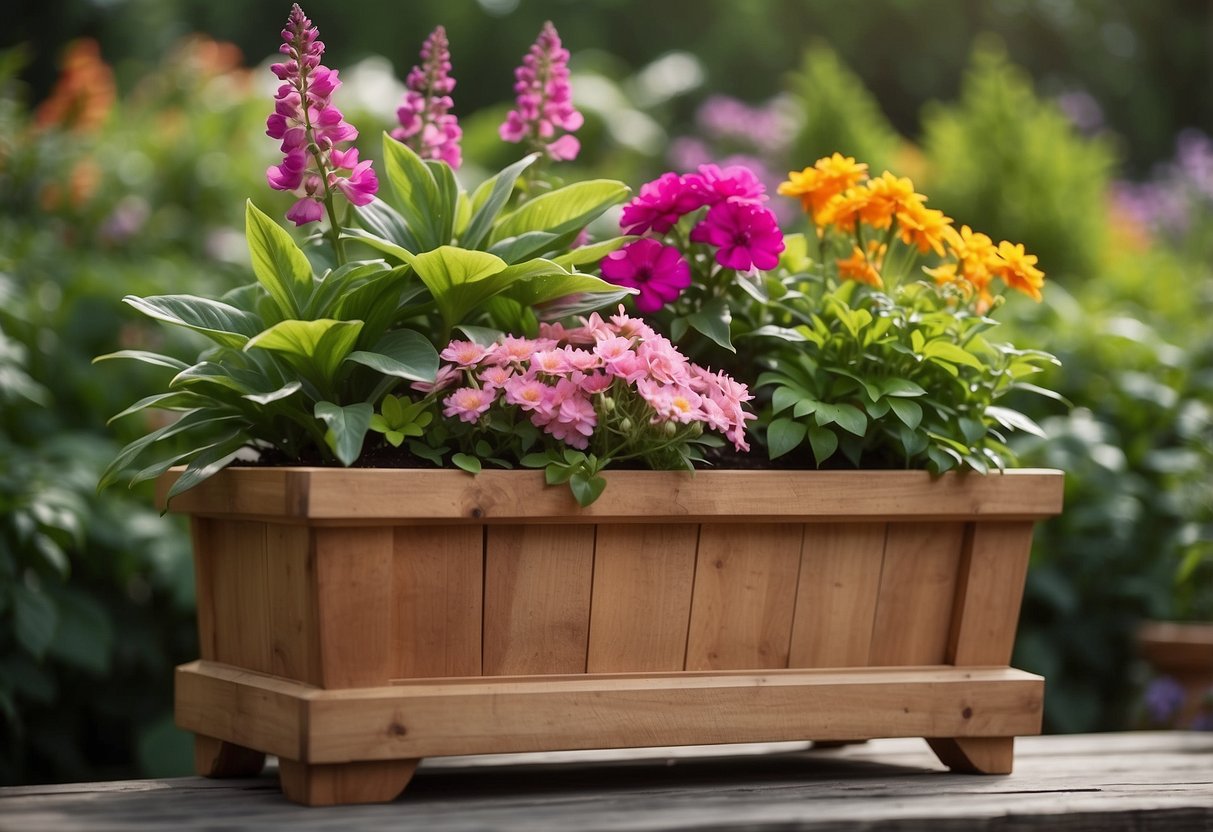
A tiered wooden planter is great for growing a variety of plants in a compact space. It’s perfect for patios, decks, or small yards.
You can build one using cedar fences and 2x4s. This design lets you plant on multiple levels, giving it a unique stair-step look.
The three-tiered design also makes it easy to separate different types of plants. For example, you could grow herbs on the top tier, flowers in the middle, and vegetables on the bottom.
3) Recycled Metal Box
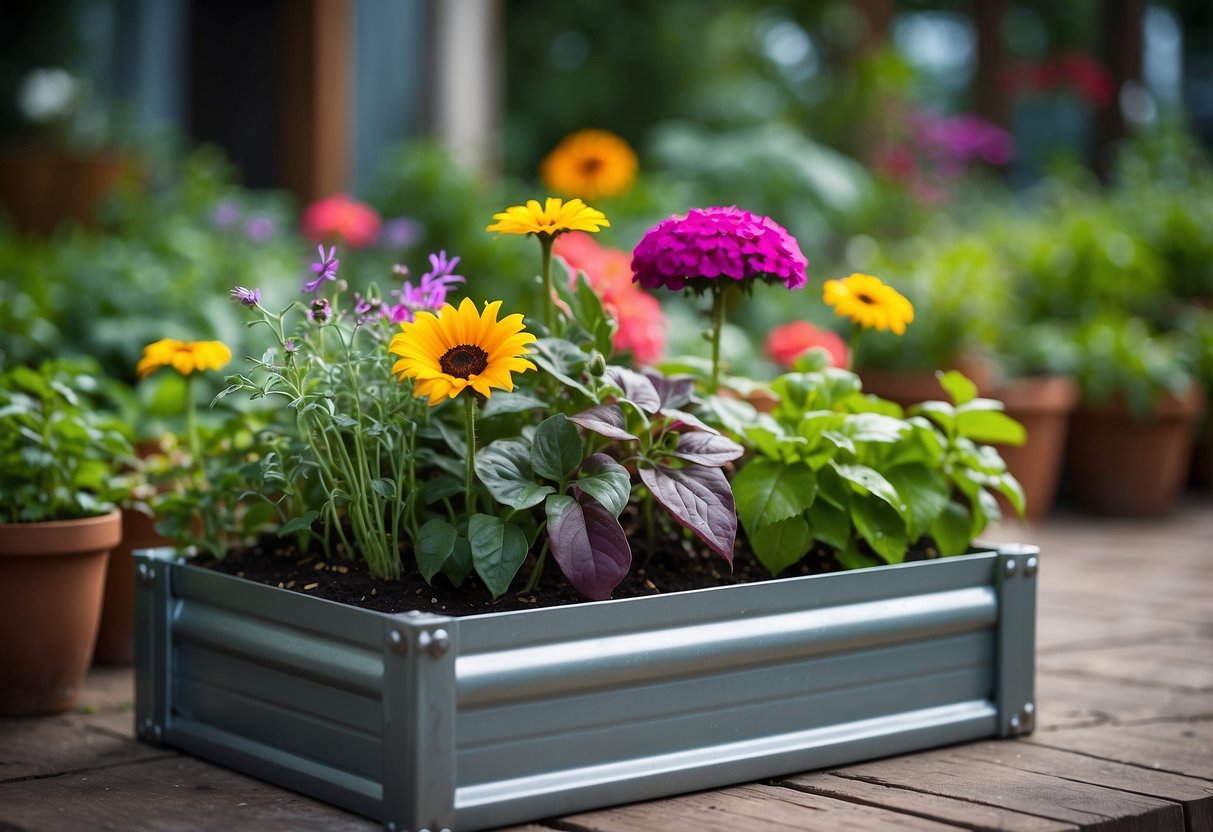
Using a recycled metal box for your square garden bed is a clever and eco-friendly choice. This type of bed can give your garden a unique industrial look while also being durable.
You can find old metal boxes or containers that can be easily transformed into garden beds. They are sturdy and last a long time. Make sure to drill some holes in the bottom for drainage.
Line the bottom with landscape fabric to prevent weeds. Then, fill it with soil, and you’re ready to plant your favorite vegetables or flowers. This approach helps you recycle and saves money.
4) Modular Concrete Blocks
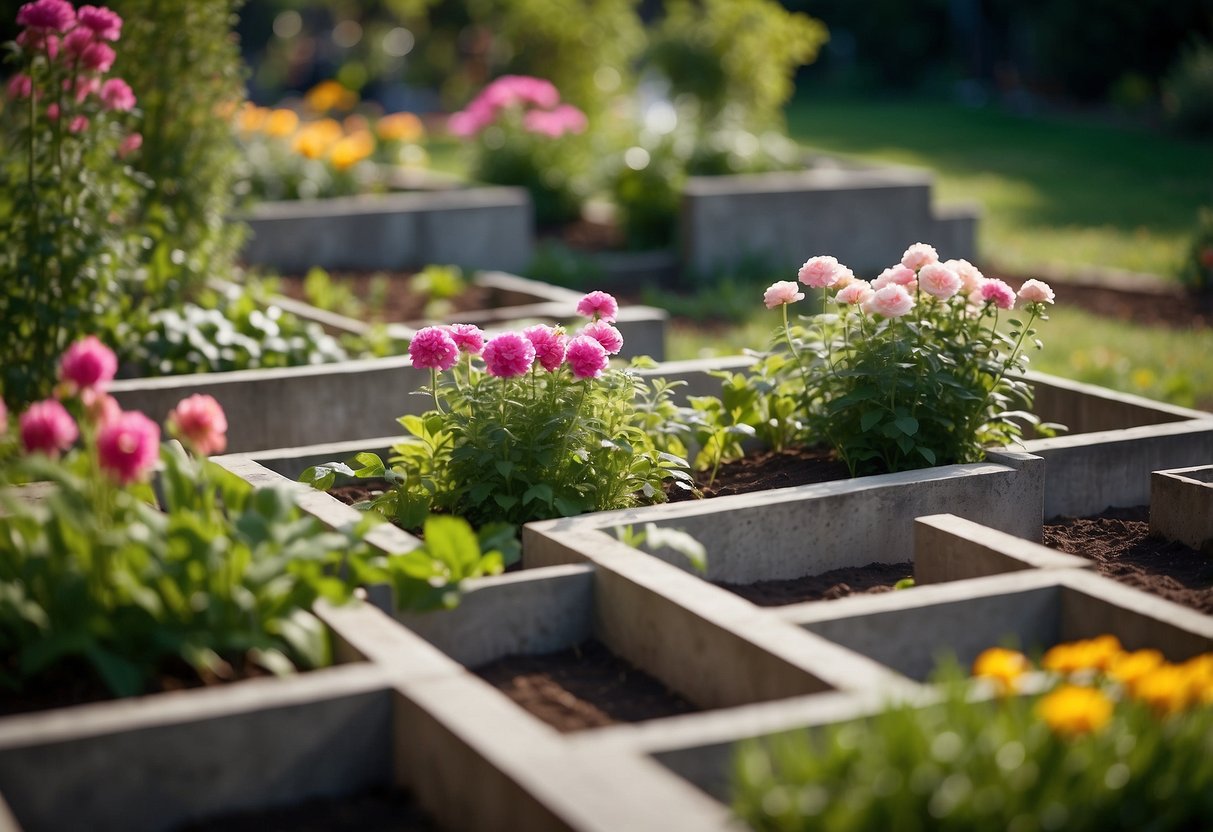
Using modular concrete blocks is a fantastic way to build a raised garden bed. These blocks are notched, making it simple to slot boards between them.
You can also stack the blocks for a taller bed, which is handy for plants with deeper roots. This method makes building your garden bed quick and easy.
For more details on this approach, check out these blocks make building raised garden beds simple.
5) Terracotta Square Pit
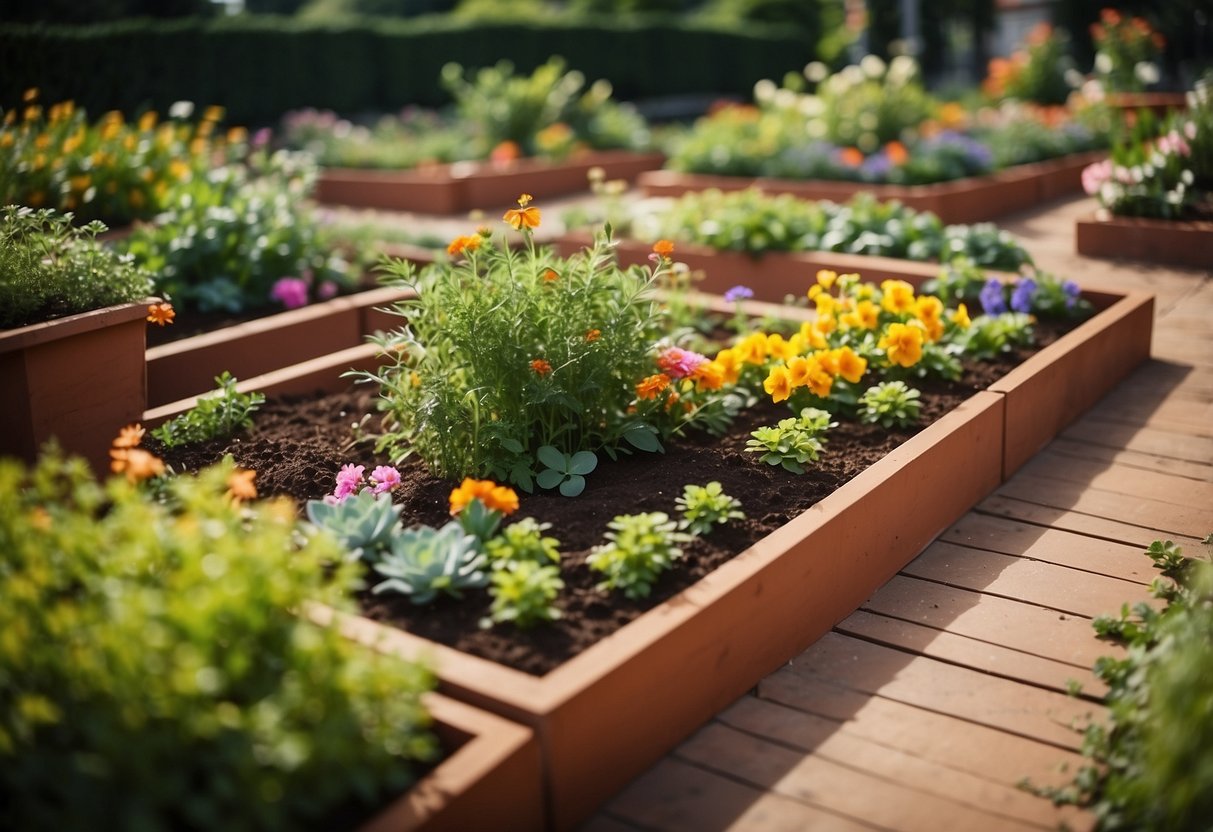
A terracotta square pit is a charming addition to any garden.
You can use terracotta planters to create a rustic, warm effect. Arrange them in a square layout to make a neat garden bed.
These planters hold moisture well and keep your plants healthy. They’re perfect for small flowers, herbs, or succulents. For more ideas, visit some wonderful suggestions on terracotta planter ideas.
6) DIY Pallet Frame
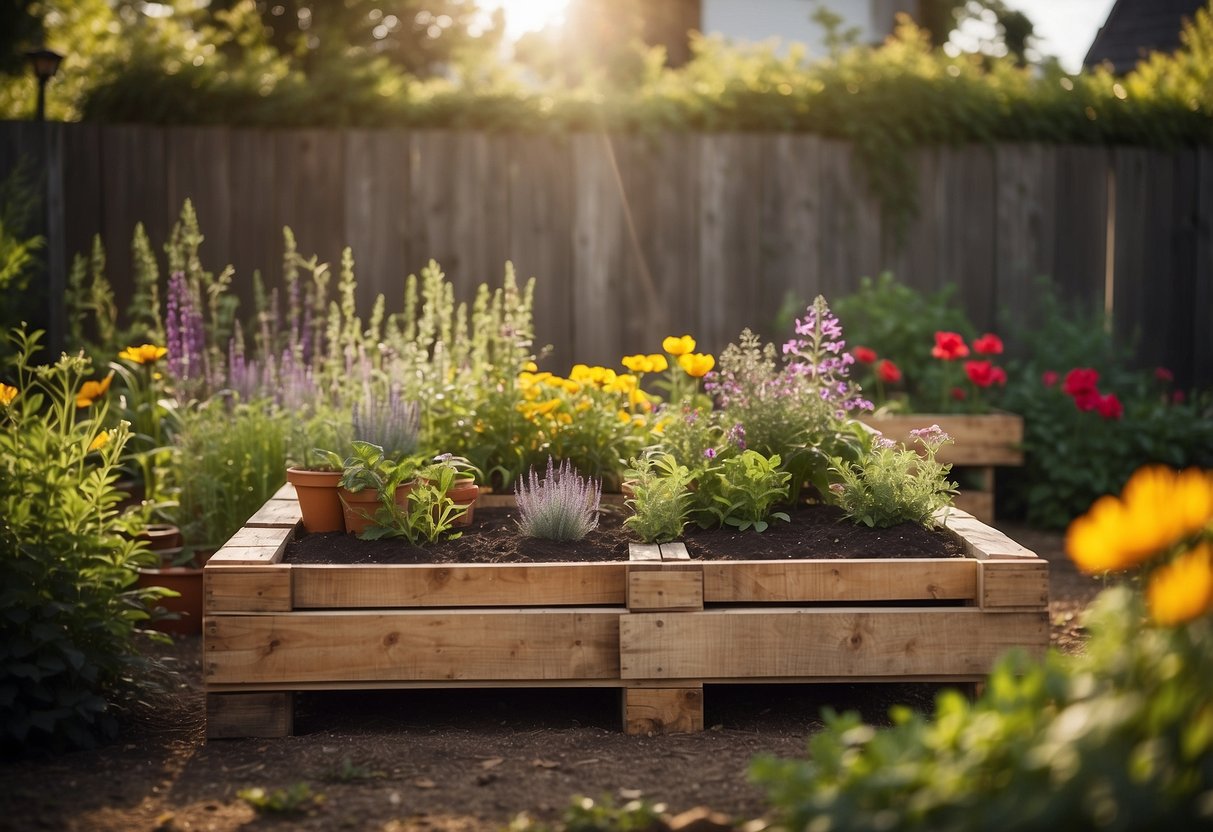
Building a DIY pallet frame is a budget-friendly option for creating a square garden bed.
You can stack multiple levels of pallets and fill them with dirt to create ample grow space.
This method allows you to grow plants from all sides, making it efficient and easy to access.
Check out these pallet garden ideas for inspiration and simple construction steps.
7) Woven Willow Edge

Adding a woven willow edge to your square garden bed gives it a rustic and natural look. This type of edging is perfect for a country garden aesthetic.
Woven willow is durable and can easily define the borders of your garden space. It’s also flexible enough to fit any shape you want.
You can find various woven willow edging ideas online to inspire your project. This edging keeps your garden neat while adding a charming touch.
8) Railway Sleepers Assembly

Railway sleepers can be a great choice for creating sturdy and attractive garden bed edges. To start, clear the area where you’ll place the sleepers by removing debris and vegetation. You want a clean surface to work on.
Next, arrange the sleepers in your desired shape, usually a square or rectangle. Make sure the corners touch to form tight 90-degree angles. Use stakes or screws to secure them in place.
If you need more height, stack another layer of sleepers on top and secure them. This can be helpful for making raised beds.
9) Brick and Mortar Border

Adding a brick and mortar border to your square garden bed can give it a clean, classic look.
First, you’ll need to gather some bricks and mortar. Lay a one-inch-thick bed of mortar for each brick, making sure they are level.
Install the bricks one by one, gently tapping them with a trowel handle to ensure they sit correctly. Use a mason’s line to keep the first course straight.
This type of border is durable and adds a neat finish to your garden bed. For more details, check out a guide on how to build a brick raised bed.
10) Galvanized Steel Tub

You can turn a galvanized steel tub into a fantastic square garden bed. They are durable and can last for many years. First, drill drainage holes in the bottom. Aim for four to six holes per square foot.
Next, elevate your tub on pavers. This helps with drainage and air circulation. Fill the bottom with pea gravel and cover it with landscape fabric.
Then, add a mix of compost and topsoil. This makes a great environment for your plants. With minimal maintenance, a galvanized steel tub garden bed can be a beautiful addition to your garden.
Benefits of Square Garden Beds

Square garden beds offer unique advantages that can greatly enhance your gardening experience. Key benefits include maximizing space and providing easier access to your plants.
Space Efficiency
Square garden beds are great for using space efficiently. Because of their shape, you can fit more beds into a given area, especially ideal for small gardens. This layout allows you to grow a variety of plants in tight spaces. You can easily plan and organize your garden, ensuring that no inch of soil is wasted.
- Optimal Planting: By arranging plants in a tight grid, you can maximize plant density without overcrowding.
- Better Yield: High-density planting often leads to higher yields per square foot.
Ease of Access
Square garden beds make it simple to reach all your plants. Their design allows you to plant in raised beds that are easy to access from all sides. This means less bending and stretching, making it easier on your back and knees.
- Convenient Maintenance: You can easily reach and care for plants without stepping on the soil, preventing soil compaction.
- Better Control: Being able to access all sides means you can easily manage weeds, pests, and harvest your crops with minimal effort.
Overall, square garden beds help you make the most of your space while providing a convenient and comfortable gardening experience.
Design and Layout Tips

For your square garden bed, it’s important to thoughtfully decide on a location with adequate sunlight and prepare the soil to maximize plant growth.
Choosing the Right Location
The first step in designing your square garden bed is picking a spot with at least six to eight hours of sunlight daily. Sunlight is crucial for most plants. When selecting a location, avoid placing your bed under trees or near buildings where shadows might reduce sunlight.
Another factor to consider is the proximity to a water source. Having a nearby water source makes it easier to maintain your garden. Also, think about accessibility. Place your bed where it’s easy to reach, especially if you have mobility concerns or plan to visit the garden frequently.
Ensure the site has good drainage. Poor drainage can be a problem if water pools around your garden bed, leading to root rot. Elevated areas or slightly sloped ground work well in preventing water from sitting around your plants.
Soil Preparation
Start by clearing the ground of any grass, weeds, or rocks. This will provide a clean slate for your new garden. Adding organic material like compost or aged manure will enrich the soil, providing essential nutrients for your plants.
Aim for a soil mix that is loose and well-drained. You can achieve this by combining garden soil, compost, and a bit of sand. This mixture improves soil aeration and encourages healthy root growth.
Consider testing your soil pH to ensure it matches the needs of your plants. Most vegetables thrive in slightly acidic to neutral soil (pH 6.0-7.0). Adjust the pH by adding lime to raise it or sulfur to lower it, as necessary.
Regularly amend your soil with compost to maintain its fertility. This practice keeps your plants healthy and productive season after season.
Maintenance and Upkeep

Keeping your square garden bed in top shape involves consistent care, focusing especially on proper watering and weed control. These key tasks will help ensure your garden remains healthy and productive.
Watering and Irrigation
Proper watering is crucial for a thriving garden. To make this easier, consider installing a drip irrigation system. This method delivers water directly to the plant roots, reducing waste and ensuring even coverage. If you don’t want to install a system, soaker hoses are another easy option.
Watering in the early morning helps reduce evaporation. You’ll want to check soil moisture by sticking your finger about 2 inches into the soil. If it’s dry, it’s time to water. Mulching is another helpful practice. Adding a layer of mulch conserves moisture and keeps the soil cooler during hot days.
Weed Control
Weeds can quickly take over if not managed properly. To control weeds, you can use landscape fabric under your soil or mulch to prevent weed growth. Organic mulches like straw or wood chips also help keep weeds at bay while enhancing soil health.
Hand-weeding is necessary but can be minimized by using tools like a hand hoe for larger areas. Regularly inspect your garden bed for any new weed growth and remove them promptly. Pre-emergent herbicides are another option and can be applied before planting to prevent weed seeds from germinating.







